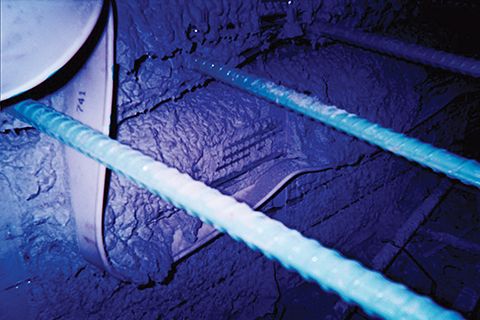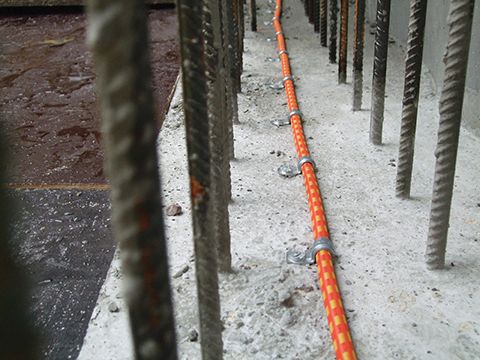CETCO gives the rundown on understanding water stops, including specification and installing. To ensure success, one must specify for performance, install with care.
Joints formed between adjacent concrete pours and where mechanical elements penetrate the concrete are the most likely points of water ingress into below-grade concrete structures. To prevent this from occurring, water stops are commonly specified and installed at every joint in the concrete below-grade.
A water stop installed in concrete joints is an important component of an overall waterproofing design to protect below-grade portions of a concrete structure. These products’ use in construction joints (i.e. ‘cold joints’) is a good design practice for building foundations, with or without a positive-side waterproofing membrane. In other words, the waterstop can be a belt-and-suspenders approach to provide a dry structure for the occupants and owner.
Below-grade structures present conditions making it very likely water, which is present under intermittent or constant hydrostatic pressure, can infiltrate through the concrete joints. Therefore, waterstops are used as part of the overall waterproofing protection on a variety of concrete structures including:
• basement walls and slabs;
• subway, vehicle, and pedestrian tunnels;
• parking structures;
• water and sewage treatment facilities; and
• canals, locks, and dams.
Click here for the full article.
Understanding waterstops & specifying for performance [BLOG]
CETCO®
View company profile| T | 0151 606 5211 |
|---|---|
| 07701315742 Tech Dept. | |
| E | amanda.browne@mineralstech.com |
| W | Visit CETCO®'s website |
| Birkenhead Road, Wallasey, Merseyside, CH44 7BU |



